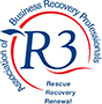What is Business Turnaround?
Put very simply, business turnaround is when a company recovers from a period of poor financial performance and effectively starts generating profits again. Business turnaround is a phrase more commonly applied to larger companies, given that, generally their bankers, other financiers and creditors are usually more willing to consider a turnaround plan, than allow the company to proceed into some formal insolvency scheme, and be faced with higher write offs of debts.
It is though possible for SMEs to consider a business turnaround plan as a credible alternative to a formal insolvency scheme. However, in order to effect a viable business turnaround plan, there are a number of key considerations to consider. We detail these in the following sections.
Elements of a Business Turnaround Plan
The starting point to any plan, is identifying exactly what the problems are. It may seem obvious to state, but without understanding what the company’s problems are and what are causing them, it would be almost impossible to devise a workable turnaround strategy. In recessionary times, it is easy to simply attribute blame to “the recession”, but exactly how is the recession affecting your business, and more importantly, what can you do improve that?
Outside of recessionary times, has anything changed in the way you do business – products, finance, marketing and sales, cost pressures? For most SMEs, it should be relatively easy to identify what is causing the downturn in financial performance. The problems usually arise, when companies become aware of the problems, but fail to adequately allocate sufficient time to fully understanding the likely impact such problems may have. This can be extremely detrimental and if allowed to continue without implementing steps to counter such issues, could eventually led to a formal insolvency process.
So, having identified what the issues are, what are the next steps?
The staring point is identifying what needs to be changed and what can easily be changed. Do you need to produce a formal plan detailing all of the changes that need to be made, or is it something, that you can manage less formally?
For most businesses, there are two key components that effectively drive the majority of business:
- Sales
- Costs
There are a number of other issues that affect trading, but sales and costs are undoubtedly the most important, given that it is highly likely that it will be one or both of these issues that has caused the downturn in financial performance.
Let’s look at sales first and ask a number of key questions:
- Have sales fallen recently – if so, why?
- When was the last time you reviewed selling prices to satisfy yourself that the price point was sufficient to cover all overheads?
- Is it possible to increase selling prices?
- Is it possible to open up new leads/clients?
- Can you improve on your customers’ payment terms?
On the cost side of the business the questions are:
- Have prices increased and have you passed these increases on to your customers?
- Can you renegotiate prices?
- Can you source products/services from elsewhere?
- Can you improve on your payment terms to suppliers?
- Aside from buying in goods and services, have other costs increased?
Successful Business Turnaround
As mentioned earlier, business turnaround is a phrase usually used in the media when describing large multinationals – the most recent examples are those relating to companies such as Vineyards Direct.com, Ford and Starbucks. This information isn’t aimed at those companies – it’s for the owner/manager/SME.
There may be occasions where a formal insolvency process could possibly provide an easier and more timely solution to a company’s problems. However, most directors would rather not willingly instigate such a process if there were a viable alternative.
A business turnaround plan could be that alternative, so long as you recognise the problem early enough and can get your management, customers, suppliers and financiers, if necessary to buy into your plan. That is the hard part and that perhaps is where it may be wise to seek external expert advice. Not only will you be getting a “fresh pair of eyes” to look at your business and its issues, but if formal negotiations are required with your suppliers, it may well add that little bit of extra confidence required.
In summary, to implement a successful business turnaround plan you must:
- Identify and accept that you have a problem
- Understand what needs to be done to rectify the problem
- Work out the steps in chronological order
- Be honest and open with your customers and suppliers
- Seek external professional support if necessary

Free Advice & Consultations
Our business turnaround team offers free advice and no obligation consultations. We have offices in London, Nottingham and Derby. Call us on 0115 838 7330, email info@cfs-llp.com or fill in our enquiry form. Our qualified team will be able to answer all your questions.


